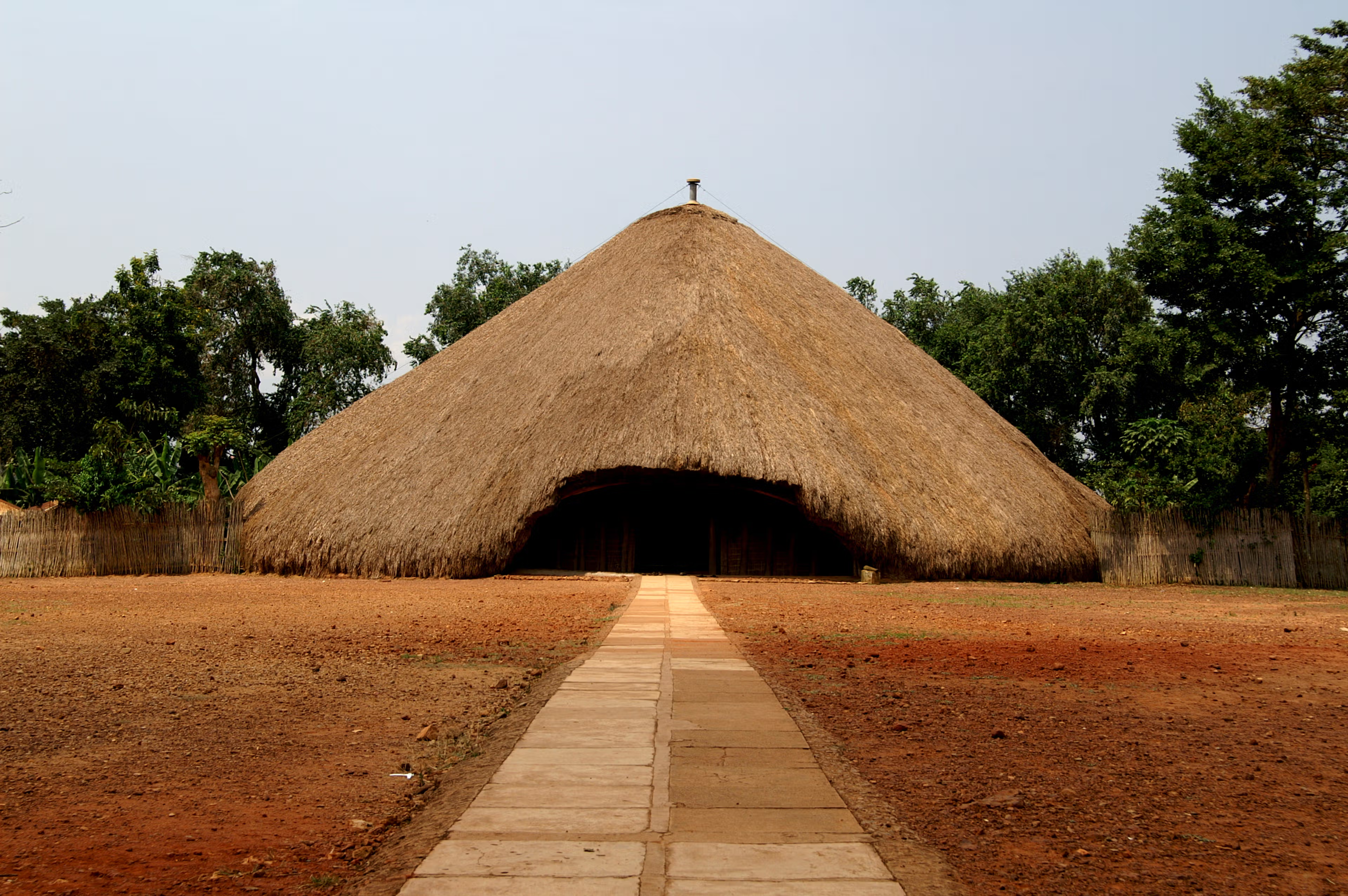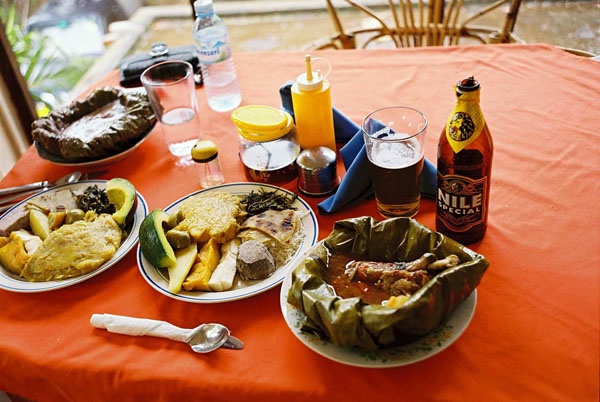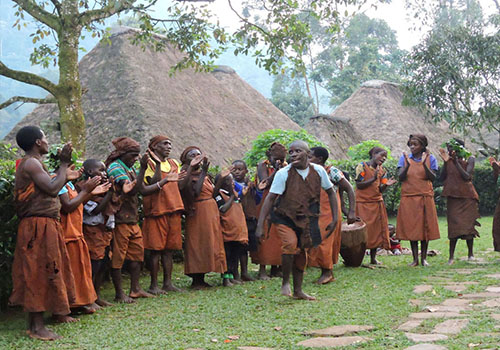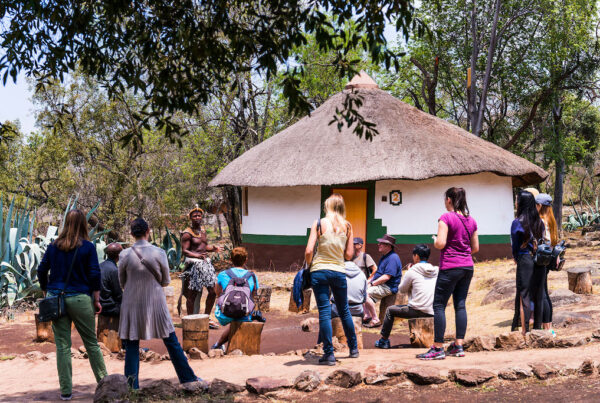Kasubi Tombs: Family-Friendly Activities Off the Beaten Path for Foodies
A Cultural and Culinary Journey in Uganda
Nestled in the heart of Kampala, the Kasubi Tombs stand as a living monument to Uganda’s royal heritage. This UNESCO World Heritage Site serves as the burial ground for the Kabakas of Buganda, offering a unique glimpse into the traditions, rituals, and history of the Baganda people. For families, visiting the Kasubi Tombs presents more than a cultural excursion; it provides an opportunity to explore Uganda’s culinary heritage, engage with local communities, and enjoy experiences off the conventional tourist trail.
Travelers who combine heritage exploration with food experiences uncover layers of culture often overlooked by casual visitors. For children and adults alike, the Kasubi Tombs offer both educational engagement and sensory delight. The site’s expansive grounds, traditional architecture, and vibrant surroundings allow families to immerse themselves in history while enjoying authentic Ugandan cuisine, creating a journey that engages mind, body, and palate.
Understanding the Kasubi Tombs: Heritage and History
The Kasubi Tombs have been a spiritual and cultural centerpiece of the Buganda Kingdom for centuries. Constructed in the late 19th century, the tombs house the remains of four Kabakas, each of whom played a pivotal role in shaping the political and cultural landscape of Uganda. The architecture, built entirely from traditional materials such as thatch, timber, and wattle, reflects the ingenuity and aesthetic sensibilities of the Baganda people.
For families, the site offers a contextualized understanding of history. Children are introduced to concepts of lineage, leadership, and cultural continuity, while adults gain insight into traditional governance, spiritual practices, and community structures. The Kasubi Tombs are therefore more than a static monument; they represent living traditions, still honored through ceremonies, festivals, and rituals that provide rich material for family engagement.
Family-Friendly Exploration: Making History Accessible
Navigating the Kasubi Tombs with children requires thoughtful planning to ensure both safety and engagement. The expansive grounds allow for leisurely exploration, where families can walk between traditional structures, observe architectural details, and participate in guided storytelling sessions. Guides often provide narratives that are accessible to young audiences, turning the visit into an interactive history lesson that captures attention while instilling appreciation for heritage.
The surrounding environment also supports outdoor activities suitable for children. Shaded areas, gardens, and open courtyards allow families to rest, play, and engage in observational games that enhance understanding of cultural and natural features. By combining movement with education, children remain actively involved and develop a personal connection to the site.
Culinary Experiences Around Kasubi Tombs
The area surrounding the Kasubi Tombs is rich in authentic culinary opportunities. Local eateries, family-run restaurants, and market stalls offer dishes prepared using fresh, locally sourced ingredients. Families can sample traditional meals such as matoke (steamed green bananas), groundnut sauces, millet porridge, and fresh fish, gaining insight into the flavors, techniques, and cultural significance of each dish.
For food enthusiasts, participating in cooking demonstrations or visiting small-scale farms enhances the experience. Children can engage with ingredients, learn about preparation methods, and even try hands-on activities under supervision. These encounters provide both educational value and sensory engagement, connecting taste with heritage, environment, and daily life.
Interactive Workshops and Local Artisans
Beyond traditional meals, families can explore workshops and artisan demonstrations near the Kasubi Tombs. These sessions often include weaving, beadwork, pottery, and traditional music, offering opportunities to witness craftsmanship and creativity rooted in Baganda culture. Children are encouraged to interact, try simple tasks, and ask questions, turning observation into active learning.
Such workshops often incorporate culinary elements, such as demonstrating how utensils are crafted for cooking or preparing ceremonial foods. This integration allows families to understand the interrelationship between material culture and cuisine, providing a holistic perspective on Baganda life.
Off the Beaten Path: Hidden Gems for Families
While the Kasubi Tombs are the central attraction, nearby locations offer additional family-friendly adventures. Small community gardens, riverside pathways, and cultural centers provide safe spaces for exploration, photography, and play. These areas are less frequented by tourists, allowing families to engage authentically with local life without the distractions of large crowds.
Children can observe traditional farming practices, sample local fruits, and participate in age-appropriate agricultural activities. These experiences not only supplement historical knowledge but also introduce young travelers to sustainable practices, environmental stewardship, and cultural diversity.
Engaging Storytelling and Historical Interpretation
A visit to the Kasubi Tombs is enriched by narrative and interpretation. Guides provide stories about the lives of the Kabakas, the spiritual significance of burial rituals, and the symbolism of architectural features. For children, these stories can be presented through games, role-play, or visual demonstrations, making history accessible and memorable.
Parents and guardians benefit from contextual explanations that connect historical events to contemporary Ugandan culture. This approach ensures that the entire family leaves with a nuanced understanding of heritage, community, and tradition, extending learning beyond the boundaries of the tombs themselves.
Food Markets and Local Flavors
Families visiting the Kasubi area are encouraged to explore nearby food markets, where fresh produce, spices, and prepared meals abound. Markets provide insight into local dietary practices, seasonal ingredients, and culinary diversity. Children can observe the selection of fruits, vegetables, grains, and proteins, learning how ingredients are chosen, combined, and prepared.
Engaging with vendors and cooks allows families to ask questions, try samples, and even participate in simple preparation tasks. This interactive engagement connects culinary exploration with cultural education, offering an immersive, multi-sensory experience that reinforces understanding of daily life and heritage.
Integrating Photography and Cultural Documentation
Photography enhances the family experience by allowing documentation of both heritage and culinary exploration. Children and adults can photograph architectural details, market scenes, artisan workshops, and food preparations. These images serve not only as memories but also as educational tools, prompting reflection on cultural practices, architectural design, and culinary techniques.
Guides often recommend safe and respectful ways to photograph ceremonies, cooking sessions, and community interactions, ensuring that cultural integrity is maintained while creativity is encouraged. This combination of observation, participation, and documentation strengthens the overall educational and sensory value of the visit.
Health and Safety Considerations
Ensuring family safety while exploring the Kasubi Tombs and surrounding areas is essential. Children should be supervised at all times, particularly around traditional structures, rivers, or market areas. Hydration, sun protection, and appropriate footwear are recommended to maintain comfort and prevent accidents.
Guided visits are encouraged, as they provide both historical context and logistical support, ensuring that families navigate the site efficiently while respecting cultural norms. Following local guidance allows families to enjoy the experience safely, maximizing learning and engagement without undue risk.
Seasonal Insights for Culinary Exploration
Timing a visit can enhance both cultural and culinary experiences. Certain seasons align with harvest festivals, agricultural activities, and local ceremonies, offering opportunities to observe special foods, participate in communal meals, and witness unique rituals. Children benefit from seeing how agricultural cycles influence diet, tradition, and community life.
Off-season visits still offer access to local flavors, daily culinary practices, and quieter exploration spaces. Planning around seasonal events allows families to balance historical education, cultural immersion, and gastronomic discovery, creating a well-rounded and memorable experience.
Combining History, Culture, and Cuisine
The true value of a family visit to the Kasubi Tombs lies in the integration of heritage, community engagement, and culinary exploration. Children observe history, participate in cultural activities, and taste authentic meals, while adults gain insight into architecture, rituals, and social practices. Each component reinforces the others, resulting in an immersive experience that is both educational and enjoyable.
Families can move seamlessly between historical tours, market visits, cooking sessions, and artisan workshops, creating a holistic itinerary that engages multiple senses, nurtures curiosity, and fosters appreciation for Ugandan culture.
A Multi-Sensory Cultural Journey for Families
The Kasubi Tombs offer a unique opportunity for families to engage in off-the-beaten-path experiences that combine history, culture, and cuisine. Children learn through interaction, observation, and participation, while adults gain a deeper understanding of the Baganda heritage and culinary traditions. Exploring markets, engaging with artisans, and sampling traditional dishes enriches the visit, ensuring that families leave with both lasting memories and meaningful educational insights.
For those wishing to fully explore the Kasubi Tombs and surrounding culinary landscape, booking tours through WildHorn Africa is highly recommended. Their expertise in arranging family-friendly itineraries, guided cultural experiences, and culinary excursions ensures that every visit is safe, immersive, and memorable. With WildHorn Africa, families can enjoy a seamless journey where heritage, food, and learning converge, creating experiences that resonate long after the trip concludes.





 WildHorn Africa – Authentic and unforgettable tours across Africa, guided by local experts who know the land, wildlife, and culture best.
WildHorn Africa – Authentic and unforgettable tours across Africa, guided by local experts who know the land, wildlife, and culture best.


